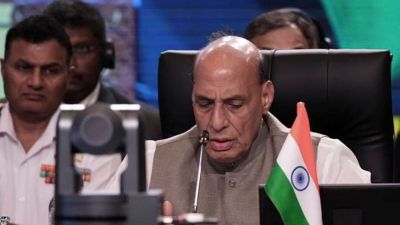By the Hammer
Then there’s the reminder of the 1913 Annie Besant case, in which the father of renowned philosopher Jiddu Krishnamurthy and his brothe...

In Murder Room, James terrorised her readers with the story of sordid serial murders and eerie exhibits in the Dupayne Museum. The Dupayne catalogue included a trunk into which a murderer had stuffed a body.
Chennai’s Court museum is housed within 2,400 sq ft on the ground floor of the 115-year-old Madras High Court complex, which was built in the Indo-Sarcenic style. The display recollects the sensational 1945 murder of Lakshmikantan, the editor of a sleazy Tamil magazine. In the case that rocked the Madras Presidency, the prime accused were MK Thyagaraja Bhagavathar and NS Krishnan—celluloid stars of the Tamil film industry. It was alleged that the two conspired to kill Lakshmikantan because he published some gossip about the two actors. A glass case holds the original handwritten judgment of April 25, 1947, acquitting the matinee idol (Bhagavathar) and popular comedian (Krishnan).
Another encased historic bundle is the judgment in the Criminal Appeal # 492, 1908, filed in the High Court by VO Chidambaram Pillai, a well-known freedom fighter. The patriot, who started the Steam Navigation Company, was convicted of offences under Section 124 (A), Indian Penal Code, for sedition and sentenced to ‘‘transportation for life’’. This meant that VOC, as he was called, was sent to the Andaman theevu (Andaman and Nicobar Islands).
But by the time the matter was taken to the Privy Council, the boys were adults and expressed their desire to remain in England and pursue a university education.
The 1951 directive that struck down the communal Government Order (for job reservations) of Madras State, which eventually led to the first amendment of the Indian Constitution, is also a museum resident.
The first suit filed in the Madras High Court was by Munsooh Doss against Potham Chetty Rungiah Chetty for the recovery of Rs 6,700 as damages for breach of contract. The most notable feature in the case was the brevity of the complaint—a handwritten one-page manuscript, framed and hung on the wall. The hall also contains the well-preserved parchment of the Mayor’s Court Amended Charter, dated January 20, 1753; Charter of Recorder’s Court, dated February 20, 1978 and the Charter of Supreme Court of Judicature of Madras, dated December 26, 1800.
Still intact are ancient pro notes and mortgage documents written in Malayalam on Cadjan leaves, old court seals and the long spears carried by judges’ orderlies. Placed near a 5-ft tall antique chair used by Justice PV Rajamannar (Chief Justice from 1948 to 1961) is a nearly 4-ft tall silver mace carried by orderlies who walked in front of the judge. The mace held high before a judge was said to symbolise the high regard for the law.
‘‘Our former Chief Justice (Markandey Katju, now serving as a judge in the Delhi High Court), who had served in the Allahabad High Court, was keen that a museum be set up here,’’ says T Krishnamurthy, the 70-year-old curator, who virtually grew up within the red brick and wood panelled corridors of the High Court. The Madras High Court museum is the third of its kind after the ones in the Supreme Court and the Allahabad Court.
And if the enthusiasm of Krishnamurthy, the oldest surviving retired employee of the Court, is any indication, the museum stands to gain more articles used by the pre-Independence judiciary. But, unlike James’ murder room, one is unlikely to enjoy the macabre thrill of running a hand over murder weapons because, as Krishnamurthy points out, ‘‘Weapons used in murders are normally destroyed once the case is over’’. Feel it getting colder?






- 01
- 02
- 03
- 04
- 05
























